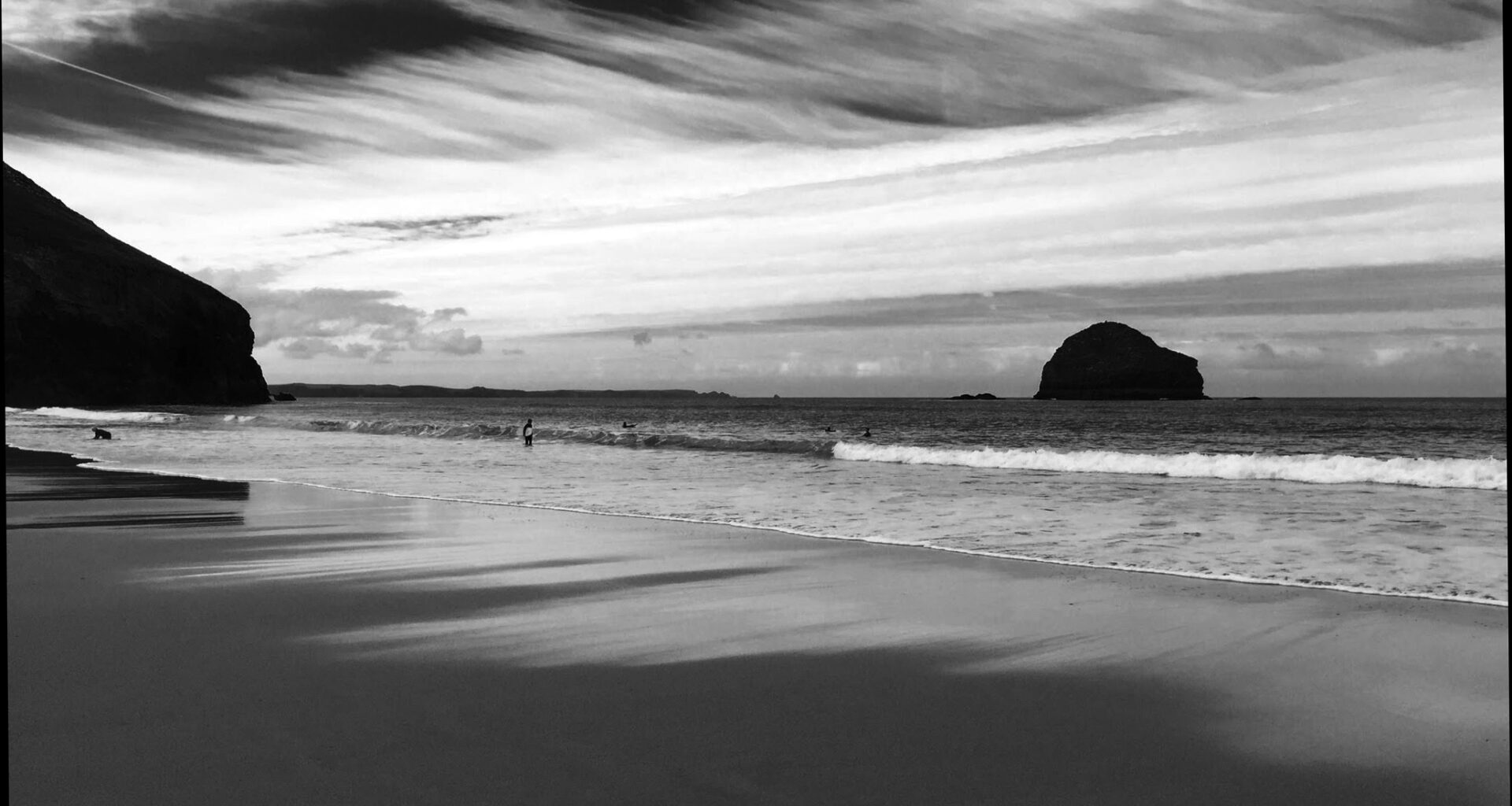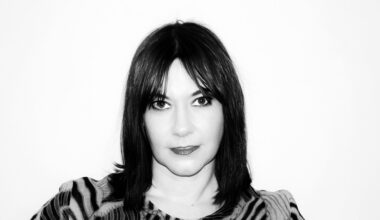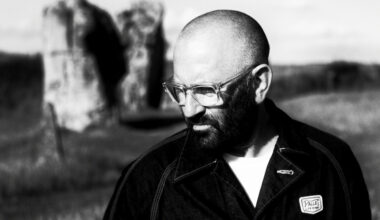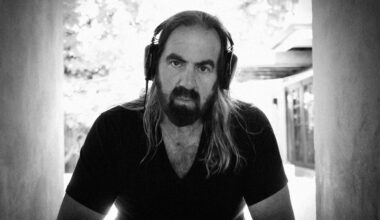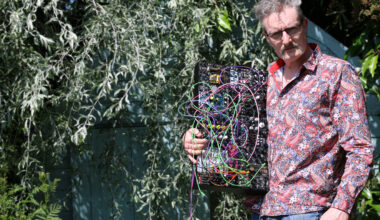Immersive field recordings of UK’s lighthouses, coasts and caves to the industrial leanings of Scissorgun and Spectral Bazaar’s radiophonic reimaginings of ‘The Planets’, Dave Clarkson is as eclectic as he is busy
“Music’s all about moving forward,” asserts Dave Clarkson.
Clarkson has been moving forward through music since he first mucked about with basic home computers in the early 1980s. Since decamping to Manchester, where he headed to study in the mid-80s, he has issued countless albums, curated eclectic club nights, collaborated like his life depended on it, and developed a work ethic that has allowed him to operate on a weird continuum between post-industrial electronic rock and imaginatively processed field recordings.
His most recent release, a collaboration with multi-instrumentalist Ruth Davies as Spectral Bazaar, found him re-imagining classical reference points with an album orbiting under the heavy gravitational pull of the BBC Radiophonic Workshop and Holst’s ‘The Planets’ – literally worlds away from the concerns of his other current projects.
Clarkson’s interest in electronic music began with Brian Eno’s work on David Bowie’s ‘Heroes’, which he first heard as a teenager at the end of the 1970s. It was the DIY aesthetic of British industrial groups and early home computing that prompted him to begin his own sonic experiments though.
“I used to rig my Sinclair up to radios to try and get industrial sounds,” he reminisces. “I was very influenced by people like Cabaret Voltaire at the time.”
Arriving at Manchester Poly, Clarkson suspended his electronic experiments, eventually getting back into music in the 90s as a drummer in various avant-garde ensembles around the city, mixing with the likes of Eric Random whose music had drawn him to Manchester in the first place. Around 2000, he found himself gravitating back to electronics, releasing CDs under the alias Illuminati on his Lotta Continua label before establishing a club night called Burst Couch profiling like-minded sonic auteurs such as Si-cut.db, Philippe Petit and Janek Schaefer.
Concurrently to the Burst Couch nights, Clarkson formed an experimental trio called Triclops, and during one of their shows he met up with Graham Massey from 808 State and Alan Hempsall. Hempsall liked what he heard and he and Clarkson eventually formed Scissorgun, releasing their first album ‘Assault Two’ in 2017.
“It’s quite a harsh, industrial record,” says Clarkson. “It’s a proper collaboration with Alan, and you’re hearing both of our influences coming through. Alan and I were both big Throbbing Gristle fans, and so we bring that and all our other shared interests out on the Scissorgun tracks.”
Touring with Hempsall saw the duo supporting Wrangler, fronted by Stephen Mallinder from the very group that had soundtracked Clarkson’s youth, Cabaret Voltaire.
The intensity of the Scissorgun project is hard to reconcile when placed next to the series of field recording-based albums that Clarkson has released on Richard Sanderson’s Linear Obsessional imprint, beginning with 2014’s ‘Music For Lighthouses’. For that release, Clarkson recorded the ambience around various lighthouses on the coast of the Wirral, near where he grew up, the result being a very quiet, tranquil collection of atmospheres.
“That’s purely a solo thing and it is a lot softer,” he explains. “What I try to achieve with those albums is a sort of hyper-reality. So rather than just flat field recordings, I want to give them another life and morph them into something different. For example, there’s a track on the ‘A Pocket Guide To Subterranea’ album of cave recordings that I released earlier this year called ‘White Scar’. I’d heard a water pump outside the cave when I was doing a field recording, and I recorded that, took it back to the studio and looped it into a rhythm, which turned the whole thing into something completely different.”
Supported by Tim Fairs, a geologist friend, ‘A Pocket Guide To Subterranea’ found Clarkson obsessively recording in various caves in locations such as Church Cove in Cornwall and Ingleton in North Yorkshire. The album complemented two 2017 recordings for Linear Obsessional – ‘A Red Guide To The Coastal Quicksands Of The British Isles’ and ‘A Blue Guide To Shore Ghosts And Sea Mystery’.
“I like old travel books,” he says. “There was a series called the ‘Ward Lock Red Guides’, and I loved the imagery on the covers of their books from the 1950s and 60s. When you look through them, they’re full of really old maps and black and white photos, and that’s the style that I pinched for those albums. The ‘Blue Guide’ record is more musical than the others. For that one I asked Graham Massey, who doesn’t live far from me, if he was interested in playing on some tracks, and I also approached Ruth Davies, and she added some cello.”
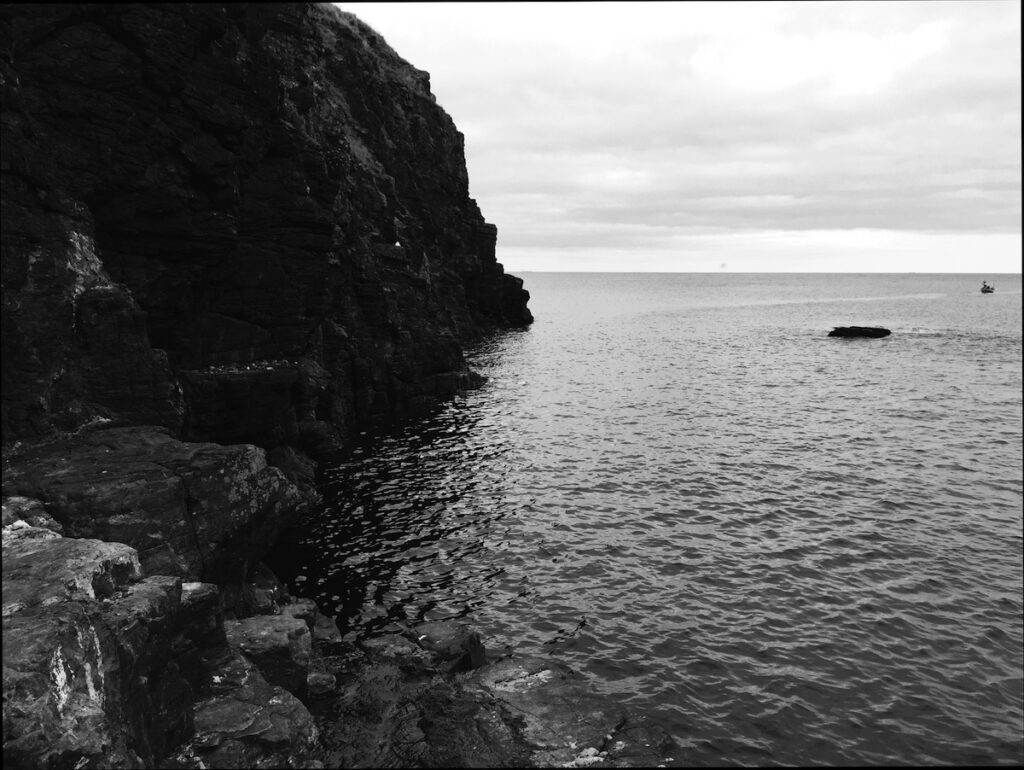
The series is curious for the way that the titles and original recordings anchor each track to a specific location, yet the sounds are often anything but what you’d expect from, say, a stretch of coastline, often taking on a harsh, noisy and unnatural hue.
“I like to give them more of a sense of drama. Don’t get me wrong, I don’t mind field recordings, but sometimes they’re more like scientific documents than anything especially musical.”
As if Clarkson’s multi-disciplinary interests weren’t already diverse enough, Spectral Bazaar – his duo with Ruth Davies – is different again.
“We’ve been working together for about five years, mainly playing jam sessions, but we never recorded anything,” he says. “One day I found a load of tapes that I’d recorded about three or four years ago, and I’d never known what to do with them. They all had a sort of cosmic, spacey sound to them, so we started jamming to them in the studio. Ruth plays cello, the oboe and the flute, and she brought her instruments round and started playing over the tracks. Instantly, I got the feeling that it was going to sound like what I’d want from a space record – that old, filmic type of tone rather than a trippy or druggy sound, which I’m not really interested in. To me it’s kind of like the type of music that you used to get on ‘The Sky At Night’ or really old films, where people would use traditional instruments in order to evoke space sounds.”
Their first album, ‘The Planets’, can be connected to Clarkson’s field recordings only through the way he processes Davies’ playing and his older tape sounds into often unrecognisable shapes.
“Ruth recorded hours and hours of jamming, and basically, I just chopped it all up and rearranged it, and added delays and effects on to the classical instruments,” he says. “That’s the reason it’s come out sounding as it does. It’s kind of an editing exercise from the hours of music we created. A lot of the rhythms on that record are made from CDs skipping. There’s a track on ‘The Planets’ called ‘Uranus’ which has got a skipping CD rhythm on it, so a lot of it is manipulation again, just with sound this time rather than location recordings.”
The album is derived from Holst’s suite of the same name, but seeks to emphasise an often overlooked aspect to the composer’s work, which was buried under its astrological exterior.
“I did a bit of research looking at ‘The Planets’ and I discovered that the original pieces were to do with feelings,” he explains. “It’s very psych-based, and that’s what we put into our music as well. The first track on the album, ‘Neptune’, and then ‘Venus’, are both dreamlike tracks, whereas ‘Mars’ and ‘Saturn’ are quite dark and mysterious, and almost industrial sounding.”
To evoke the characteristic rings around Saturn, Clarkson built up layers and layers of different loops, whereas the jolly phrasing of ‘Jupiter’ was achieved through a surprising detour into deep acid techno territory.
“We wanted to put every feeling into it,” explains Clarkson. “There are pieces that are very dark, and beautiful and fascinating, but also mysterious. With ‘Jupiter’, the feeling I was trying to get was from the scene in the original ‘Star Wars’ film where all the creatures are dancing in a bar.”
‘The Planets’ has a resonant dimension suggestive of a pinnacle in Dave Clarkson’s almost 40 years of making music, but characteristically he’s already moved on to other projects. We spoke while he was taking a break from arranging and producing the next Scissorgun album, and a few weeks later I receive emails in quick succession advising that another highly conceptual Spectral Bazaar LP was already in the can, and that he’d also completed some recordings in Rendlesham Forest in Suffolk for another Linear Obsessional release.
“I’ve already got the idea for the next one in that series,” he says. “I want to get the sound of crackling wood, owls and other things you hear at night that I can turn into loops. I’ve got a vision for a series of releases that will just go on and on, and which I’ll never got bored with.
“For me, it’s the thrill of joining things together and making new sounds out of established things,” he concludes. “It’s the whole chaos-ness that’s fun about it. It’s taking those risks, manipulating those sounds, and making something as left-field as you possibly can.”
For more about Dave Clarkson’s solo work, Scissorgun and Spectral Bazaar, visit cavendishhouse.bandcamp.com
